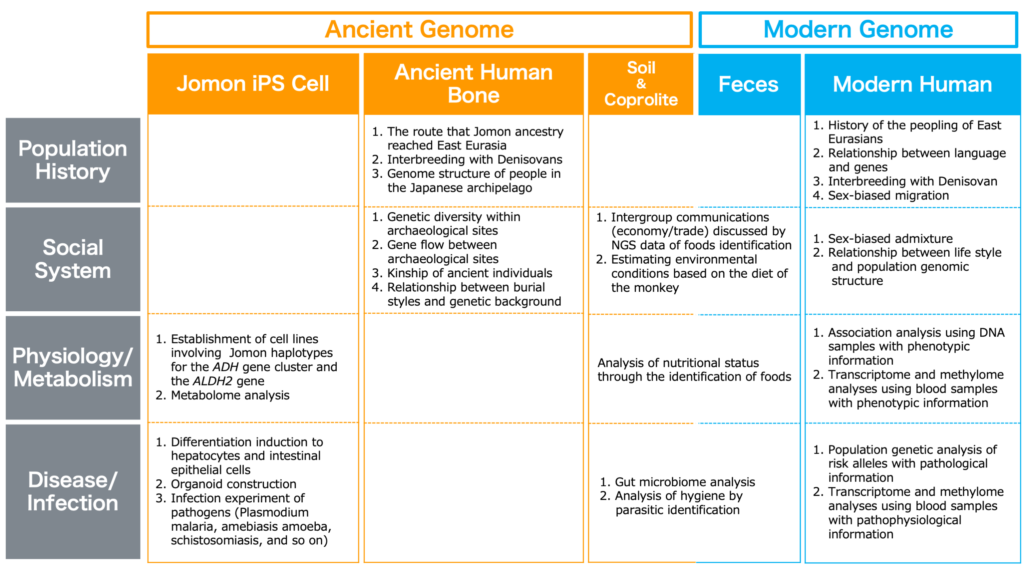ホーム > プロジェクト
Current research
Our purpose is to clarify the expansion and adaptation of Homo sapiens, particularly by analyzing ancient genomic information. How did sapiens reach the eastern side of the Eurasian continent and then spread to Oceania and the Americas? How did sapiens reach the Japanese archipelago? Looking into these routes, we will disclose how the genomes of East Asians and modern Japanese were formed.
The spread of sapiens would have required adaptation to various environments. After leaving Africa, exposure and amount of sunshine duration changed when sapiens expanded into higher latitudes. Sapiens have also experienced dramatic temperature changes and climate. Initially, sapiens spread out of Africa during the last glacial period of colder temperatures. The question is how sapiens would have survived adapting to these cold environments.
We also consider the impact of agriculture and pastoral farming on sapiens, which started about 10,000 years ago. Agriculture and pastoral farming changed the types of foods that were obtained during hunting-gathering times. By becoming food producers, sapiens were able to maintain a larger population. On the other hand, it may have resulted in differences between rich and poor, and the social structure, based on the family, changed patrilineally and hierarchically. Agriculture and pastoral farming brought about changes in food consumption. These dietary changes could be presumed to have caused changes in the gut microbiota, that is changes in the types of parasites and pathogens observed in the gut. In addition, sapiens might have experienced epigenetic changes associated with these external changes.
We ask what the impact of these changes was on the human genome. We are working on the following research topics, in order to try to obtain “answers” to these “questions.”

Paleogenomics
- Ancient human bone genome analysis
By what route did sapiens reach East Eurasia and the Japanese archipelago? DNA is extracted from the bones of the people who lived in the past, such as Jomon people, and genome sequencing is ongoing. - Coprolite genome analysis
What did the people who lived in the past eat? What was the intestinal environment? The DNA remaining in the coprolite, which is a fossil of feces, is extracted and genome analysis is performed. - Ancient soil genome analysis
There are many archaeological sites where bones and coprolite are not found. This is an attempt to clarify the activities of people who lived in the past, using the small amount of DNA remaining in the soil of the archaeological sites as a clue.
Jomon iPS cell
This is a project to clarify what kind of biological characteristics the Jomon people had by utilizing the Jomon people’s genomic information. Approximately 10 to 20% of the genome fragment (Jomon haplotype) inherited from the Jomon people is present in the modern Japanese genome. We construct iPS cells from modern Japanese cells with Jomon genome fragments. Two-dimensional differentiation (neuroepithelial cells, hepatocytes, etc.) or three-dimensional differentiation (cerebral organoids, hepatic organoids, intestinal organoids) is performed from these “Jomon iPS cells”, and the developmental dynamics and cell phenotype are comprehensively and chronologically performed.












